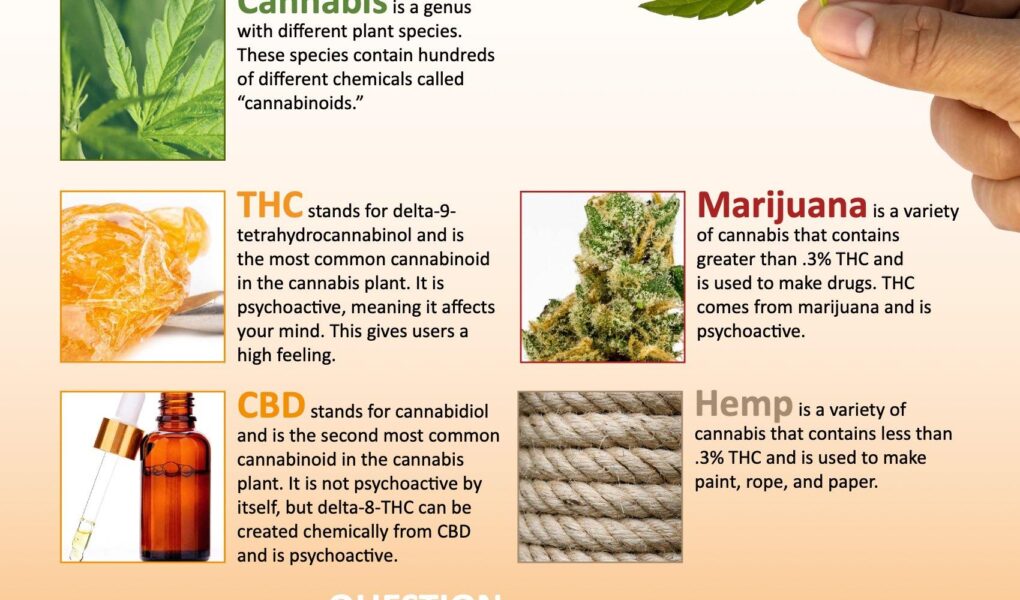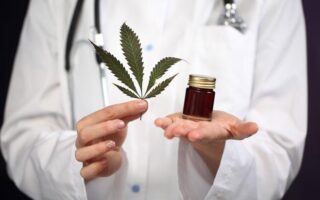Unveiling the Green: Intriguing Facts About Marijuana
In a world where the conversation around cannabis has evolved from whispers to debates and discussions, marijuana emerges as both a cultural icon and a subject of scientific inquiry. Its storied history weaves through ancient rituals and modern medicinal applications, capturing the curiosity of anthropologists, biochemists, and social activists alike. As the fog of misinformation dissipates, a clearer understanding of this complex plant begins to take shape. From its diverse strains and myriad uses to the ongoing dialogue about legislation and health benefits, marijuana is more than just a recreational substance; it’s a fascinating amalgam of botany, history, and science. Join us as we explore the multifaceted truth behind marijuana, separating fact from fiction and shedding light on the realities of this captivating plant.
Table of Contents
- Understanding the Science Behind Marijuana and Its Effects
- Exploring the Legal Landscape of Marijuana Across Different Regions
- Health Implications and Therapeutic Potential of Cannabis
- Navigating Responsible Use and Best Practices for Consumers
- Q&A
- Key Takeaways
Understanding the Science Behind Marijuana and Its Effects
The intricate relationship between marijuana and the human body is primarily governed by cannabinoids, the chemical compounds found in the cannabis plant. These compounds interact with the endocannabinoid system (ECS), which plays a crucial role in regulating various bodily functions. Key cannabinoids include THC (tetrahydrocannabinol), known for its psychoactive properties, and CBD (cannabidiol), which is non-psychoactive. When consumed, THC binds to CB1 receptors in the brain, leading to feelings of euphoria and altered perceptions. In contrast, CBD interacts more with CB2 receptors, which are primarily found in the immune system, possibly contributing to anti-inflammatory effects without the high associated with THC.
Research indicates that marijuana can have varying effects on individuals, influenced by factors such as dosage, method of consumption, and individual biochemistry. These effects can include relief from chronic pain, alleviation of anxiety, and enhanced mood, but they might also lead to adverse reactions like paranoia and impaired cognitive function. Understanding these factors is vital, as not every user experiences the same benefits or drawbacks. A quick look at common effects reveals:
- Short-term effects: altered sense of time, increased appetite, impaired memory
- Long-term effects: potential addiction, respiratory issues (if smoked), variability in mental health
- Therapeutic uses: management of epilepsy, Crohn’s disease, and multiple sclerosis symptoms
Exploring the Legal Landscape of Marijuana Across Different Regions
The legal status of marijuana varies significantly across the globe, forming a complex tapestry that reflects diverse cultural attitudes, economic considerations, and public health policies. In some regions, recreational use has been fully legalized, while others strictly regulate medicinal use or retain outright bans. Understanding this intricate web of regulations is essential for anyone interested in the industry, consumers, or advocates. Key factors influencing legality often include:
- Public Opinion: Shifts in societal views can lead to changes in legislation.
- Economic Opportunities: Regions recognizing the potential tax revenues from marijuana have been quicker to explore legalization.
- Health Concerns: The medical benefits of cannabis are increasingly acknowledged, prompting some governments to reconsider their stance.
Examining specific regions, we can see a stark contrast in the approach taken. For instance, North America has witnessed significant changes, with countries like Canada fully legalizing marijuana at a national level, while states in the U.S. have adopted a more fragmented approach. Conversely, in Asia, many countries still impose heavy restrictions, reflecting historical contexts and prevalent social norms. The following table summarizes the legal status of marijuana in selected regions:
| Region | Legal Status |
|---|---|
| North America | Legal in Canada; varies by state in the U.S. |
| Europe | Mixed; some countries have legalized medical use. |
| Asia | Mostly illegal; few countries allow medicinal use. |
| South America | Increasing legalization; individual countries exploring options. |
Health Implications and Therapeutic Potential of Cannabis
Cannabis has garnered significant attention not only for its recreational use but also for its potential therapeutic applications. Research suggests that the various compounds found in cannabis, particularly cannabinoids like THC (tetrahydrocannabinol) and CBD (cannabidiol), may play vital roles in modifying health outcomes. Some health implications associated with cannabis use include:
- Pain Relief: Studies indicate that cannabis can reduce chronic pain, making it a compelling alternative for pain management.
- Anxiety and Stress Reduction: Certain cannabinoids may have anxiolytic properties, potentially alleviating symptoms of anxiety.
- Anti-Inflammatory Effects: Cannabis may help in managing inflammatory conditions through its interaction with the body’s endocannabinoid system.
- Neuroprotective Properties: Emerging evidence suggests that cannabis could support brain health, especially for neurodegenerative diseases.
Despite its promising therapeutic potential, the implications of cannabis use are multifaceted and warrant careful consideration. Variability in individual response, the psychoactive nature of certain cannabis compounds, and legal restrictions can influence its adoption as a therapeutic agent. Key factors to consider include:
| Factor | Consideration |
|---|---|
| Dosage | Finding the right dose is crucial for maximizing therapeutic benefits while minimizing side effects. |
| Method of Consumption | Different methods (e.g., smoking, edibles, oils) may yield varying effects and onset times. |
| Medical Supervision | Consulting with a healthcare provider is essential for safe and effective use. |
Navigating Responsible Use and Best Practices for Consumers
As marijuana becomes increasingly accessible, it is essential for consumers to approach its use responsibly. Understanding different strains, dosages, and consumption methods is fundamental to enhancing your experience while minimizing potential risks. Here are some best practices to consider:
- Start Low and Go Slow: If you are new to marijuana or trying a new product, begin with a low dose and gradually increase as needed.
- Research Strains: Different strains have varying effects. Indicas tend to produce relaxing effects, whereas sativas are often more uplifting.
- Know the Legalities: Familiarize yourself with local laws regarding marijuana use, including possession limits and where it can be consumed.
- Stay Hydrated: Many users report dry mouth; keeping water on hand can help mitigate this common side effect.
It is also important to consume marijuana in a safe environment, especially when trying new products or dosages. Operating machinery, driving, or engaging in activities that require full attention may pose risks under the influence. Consider the implications for your mental and physical health as well. Here’s a simple table to summarize key considerations:
| Consideration | Details |
|---|---|
| Consumption Method | Edibles, vaporizers, smoking; each has different onset times and effects. |
| Environment | Choose a comfortable, familiar space for consumption. |
| Health Effects | Monitor your body’s reaction and consult professionals if needed. |
| Setting Limits | Establish personal boundaries and respect them to ensure safe use. |
Q&A
Q&A: Exploring the Many Facets of Marijuana
Q1: What is marijuana, and what are its primary components?
A1: Marijuana, often referred to as cannabis, is a plant that has been used for centuries for both medicinal and recreational purposes. Its primary components are cannabinoids, with the most well-known being THC (tetrahydrocannabinol), which is responsible for the psychoactive effects, and CBD (cannabidiol), which is celebrated for its therapeutic properties without the high.
Q2: How does marijuana affect the human body?
A2: When consumed, marijuana interacts with the body’s endocannabinoid system, which regulates various functions such as mood, appetite, memory, and pain sensation. THC binds with cannabinoid receptors to produce effects like relaxation and euphoria, while CBD can promote feelings of calm and relief from pain or anxiety.
Q3: Is marijuana addictive?
A3: While not considered as addictive as substances like alcohol or tobacco, marijuana can lead to what is termed cannabis use disorder in some individuals. Studies suggest that about 9% of users may develop a dependence, which increases for those who start using at a younger age or consume it frequently.
Q4: Can marijuana be used for medical purposes?
A4: Yes, marijuana has gained recognition for its medicinal benefits. It has been used to alleviate chronic pain, reduce inflammation, mitigate anxiety and depression, and stimulate appetite in patients undergoing treatments like chemotherapy. Many places now allow the use of medical cannabis, subject to regulations and prescriptions.
Q5: What are some common methods of consuming marijuana?
A5: Marijuana can be consumed in various ways, each offering different experiences and effects. Common methods include smoking (joints, blunts, or pipes), vaporizing, edibles (like gummies or infused foods), oils, and tinctures. Each method varies in potency and onset time, influencing how users experience its effects.
Q6: Are there any side effects associated with marijuana use?
A6: Yes, while many users appreciate the effects of marijuana, there can be side effects. Common experiences include dry mouth, increased heart rate, and altered judgment. Some individuals may also deal with anxiety or paranoia, especially with high THC concentrations. Long-term use has been linked to cognitive impairments, particularly in younger users.
Q7: How is marijuana being viewed in terms of legality around the world?
A7: The legality of marijuana varies significantly across the globe. Some countries have fully legalized it for recreational and medicinal use, while others maintain strict prohibitions. Many places are moving towards decriminalization or allowing medical use, reflecting a gradual shift in societal attitudes toward cannabis.
Q8: What is the difference between hemp and marijuana?
A8: Hemp and marijuana are both varieties of the cannabis plant, but they are classified differently based on their THC content. Hemp contains 0.3% or less THC and is primarily used for industrial purposes—like textiles, paper, and food products—whereas marijuana is cultivated for its higher THC content and psychoactive effects.
Q9: What are the potential benefits of legalizing marijuana?
A9: Advocates for legalization argue that it can lead to increased tax revenue, reduced law enforcement costs, and the ability to regulate the quality and safety of the product. Furthermore, it can provide access to medicinal cannabis for those who need it and support economic growth through the creation of jobs in the industry.
Q10: What should individuals keep in mind when considering marijuana use?
A10: Those considering marijuana use should be mindful of their local laws, their health status, and their personal reasons for using it. It’s essential to understand how it might interact with any medications, as well as the potential effects on mental health, especially for first-time users or those with a history of anxiety or depression. Engaging in responsible use and seeking guidance from healthcare professionals can enhance the experience while minimizing risks.
By illuminating these facts, we hope to encourage an informed and balanced conversation about marijuana, highlighting both its complexities and its potential.
Key Takeaways
As we draw the curtain on our exploration of marijuana, it becomes clear that this multifaceted plant is as complex as it is captivating. From its historical significance to its evolving legal status, and from its medical potential to the myriad debates surrounding its use, marijuana has woven itself into the fabric of society in ways both profound and enigmatic.
Whether viewed through the lens of science, culture, or policy, the facts about marijuana invite us to engage in thoughtful discourse, free from stigma and preconception. As we continue to learn and adapt to new information, one thing remains certain: the conversation about marijuana is far from over. So, let’s keep the dialogue alive, armed with knowledge and an open mind, as we navigate the future of this remarkable plant and its place in our world.



